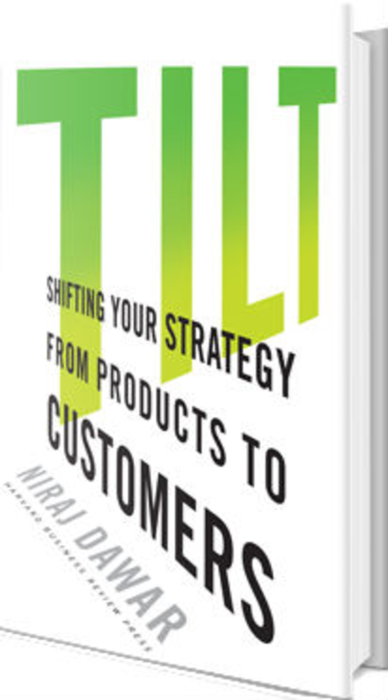Marketers love their data. It allows them to target customers most likely to buy. It helps predict which customers will buy what next. It adds context to build relevancy in customer interactions. But, according to Niraj Dawar, author of Tilt: Shifting Your Strategy From Products to Customers, one-to-one marketing will eventually lead to no more than a short-term tactical advantage, instead of a sustainable long-term competitive advantage.
“When every competitor becomes equally good at predicting each customer’s next purchase, all of the companies will spend effort and money to capture that purchase,” Dawar writes in Tilt. “In fact, they’ll spend so much effort and money that they’ll wipe out their profits from the marginal transaction.”
Dawar isn’t suggesting that marketers stop trying to predict customers’ next and future purchases. Instead, he recommends that marketers also use the vast sources of data available to them to create a unique, big-picture view of their customers—and use that distinctive perspective to inform marketing strategy and determine the ideal customer interactions.
Because no two companies have the same sets of data, each company that takes this approach is guaranteed to have a customer view unlike any of its competitors, Dawar points out. “The big picture that any company develops, the insights that come from it, and the value it can deliver for your customers will always be unique. None of your competitors have the same combination of customers or customer interactions that you have; nor do they see the industry from the same perspective that you do…,” he writes. “The pieces of the puzzle that you assemble will be impossible for competitors to replicate.”
Dawar compares this shift in perspective to photography: Instead of creating portraits of customers, marketers should be creating a view that’s more like aerial photography. The benefits brands will gain by building this one-of-a-kind customer view, he notes, include pricing flexibility, increased customer engagement and loyalty, and a long-term competitive advantage.
Dawar recommends that marketers ask themselves the following before taking a big-picture approach:
- What data could you aggregate (that you don’t currently) that would yield new insight? Would customers be willing to provide data that they haven’t before?
- Is there enough diversity in your customer base that the aggregate data would lead to added benefits or unique insight?
- Will the benefits of creating a big picture outweigh the costs of doing so? What are the specific benefits?
- If you put in the time and effort to build a big picture will it actually change the way you market? Will it improve your level of insight and your ability to create a competitive advantage? How so?
“The big picture is a quintessentially downstream competitive advantage that is based on your perspective on the marketplace,” Dawar writes. “To grasp it requires you to tilt.”








